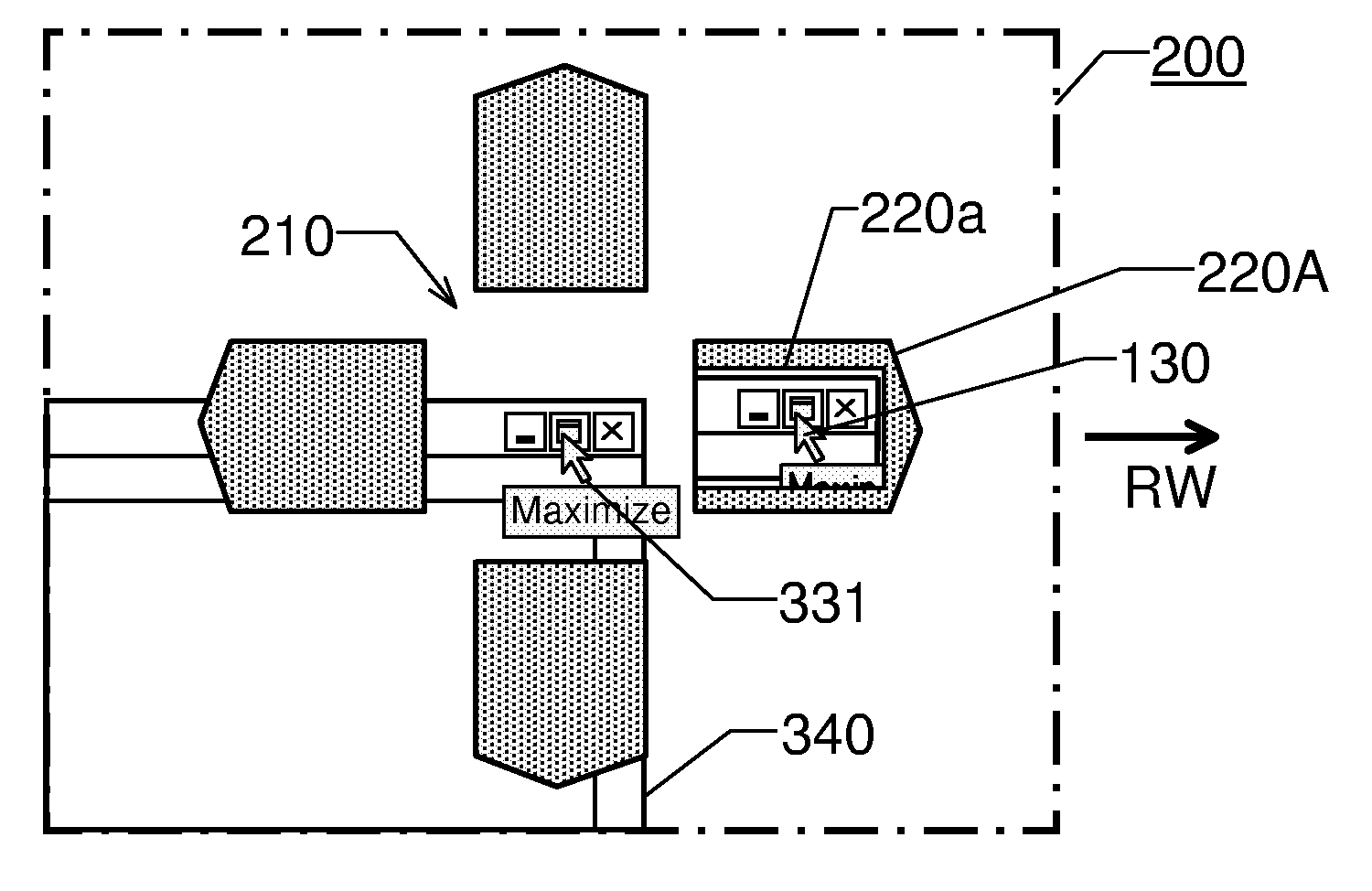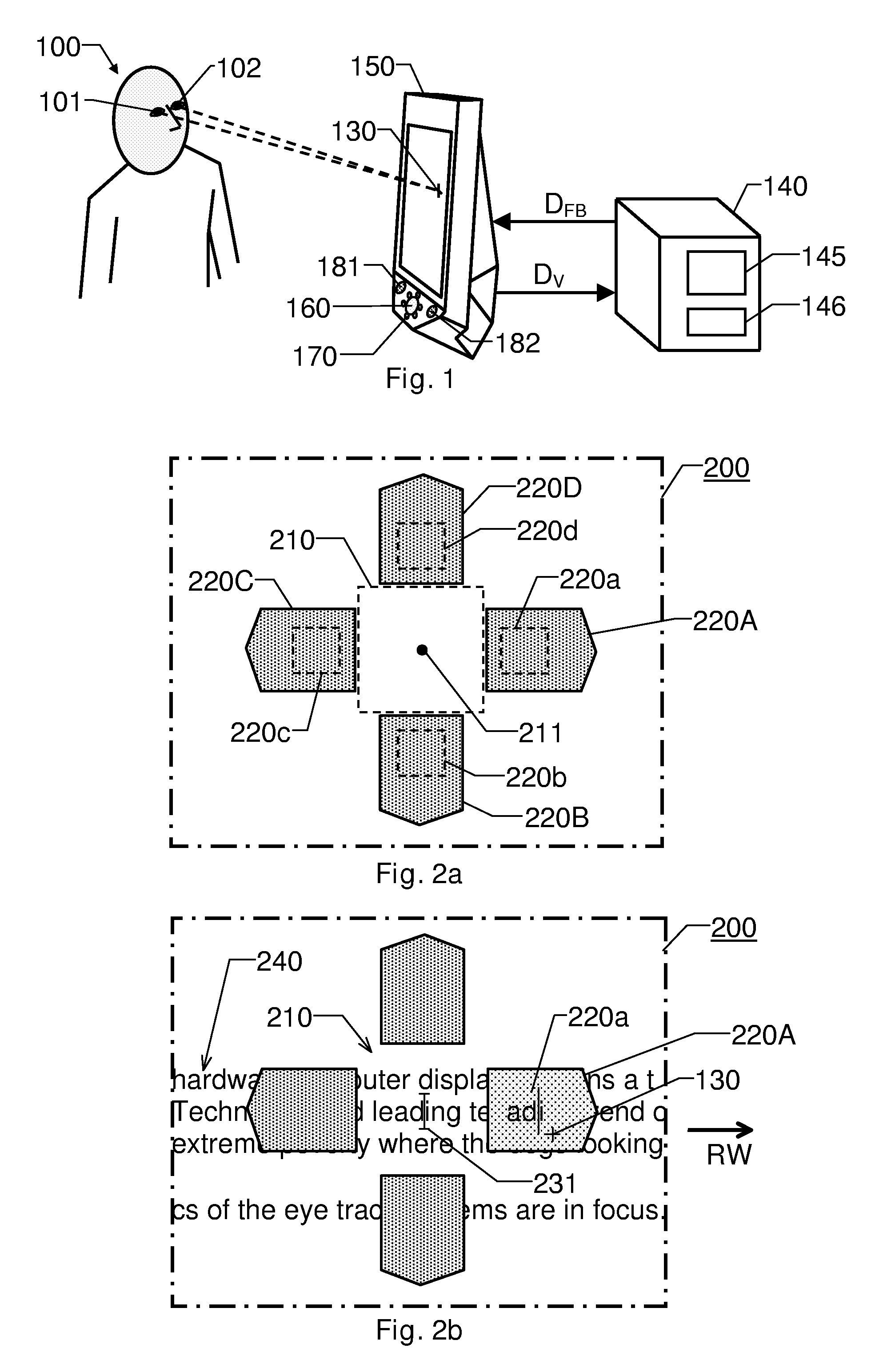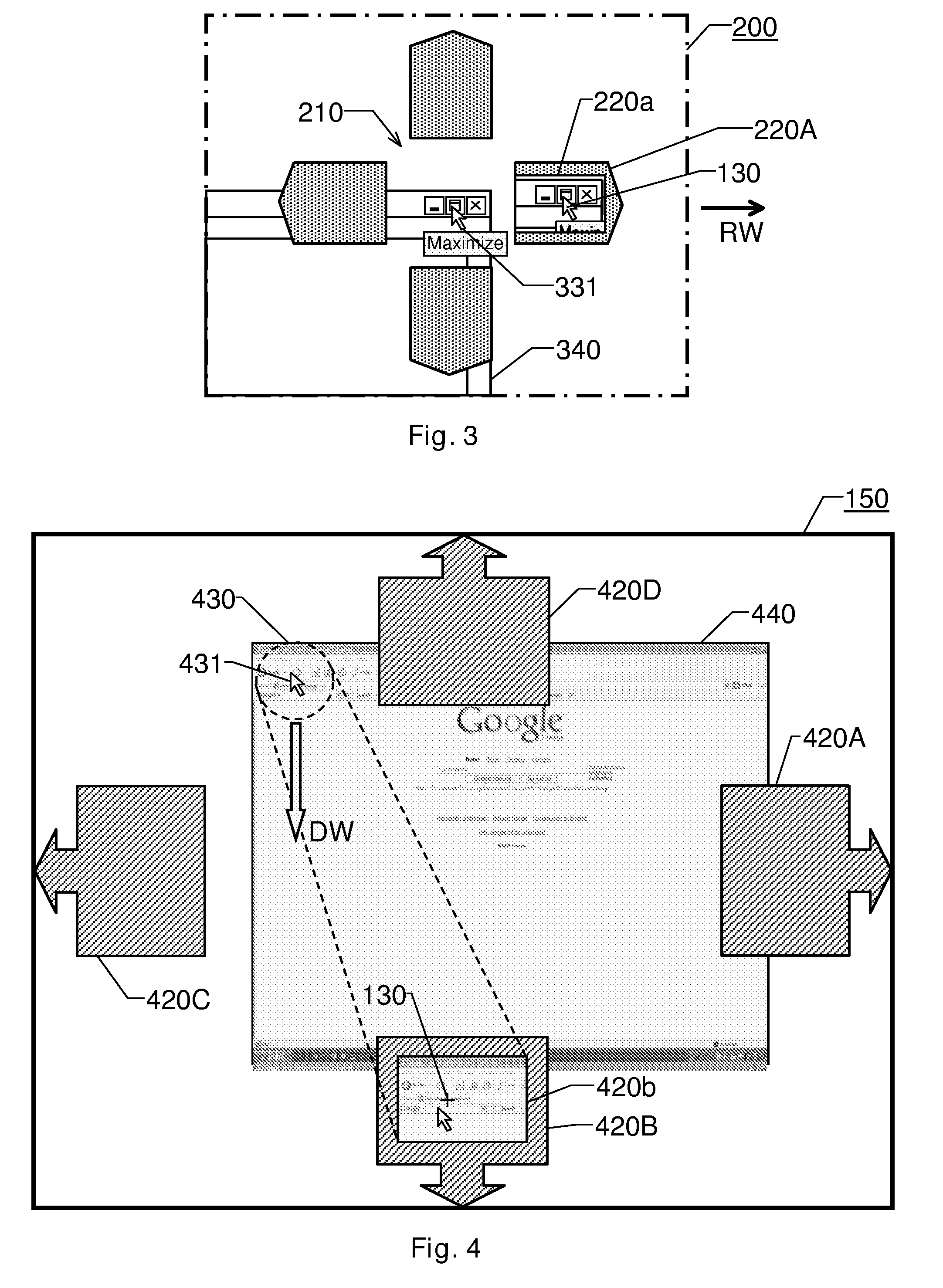Eye tracker with visual feedback
a visual feedback and eye tracking technology, applied in the field of automatic eye tracking, can solve the problems of fatigue symptoms and discomfort experienced by users, eye-controlled input interfaces imposing comparatively heavy motor tasks on the eyes of users, and known eye-controlled solutions often fail to achieve a fully satisfying user-interaction with the computer, etc., to achieve adequate information feedback, efficient and reliable, and without sacrificing the ability of users to control the events on the display
- Summary
- Abstract
- Description
- Claims
- Application Information
AI Technical Summary
Benefits of technology
Problems solved by technology
Method used
Image
Examples
Embodiment Construction
[0039]We refer initially to FIG. 1, which shows a schematic picture of an eye-tracking system according to one embodiment of the invention. The system includes a computer apparatus 140 and an associated graphical display 150. It is presumed that the computer apparatus 140 presents at least one on-screen representation of at least one GUI-component on the display 150, wherein the least one GUI-component is controllable in response to commands originated by an eye-tracker means.
[0040]The eye-tracker means includes an imaging device 160, e.g. including a video camera. Preferably, the eye-tracker means also includes one or more light sources, for instance a first set of light sources 170 located relatively proximate to an optical axis of the imaging device 160, and a second set of light sources 181 and 182 located relatively remote from the optical axis of the imaging device 160. Thereby, both bright-pupil (BP) PCCR-tracking and dark-pupil (DP) PCCR-tracking of a user's 100 eyes 101 and...
PUM
 Login to View More
Login to View More Abstract
Description
Claims
Application Information
 Login to View More
Login to View More - R&D
- Intellectual Property
- Life Sciences
- Materials
- Tech Scout
- Unparalleled Data Quality
- Higher Quality Content
- 60% Fewer Hallucinations
Browse by: Latest US Patents, China's latest patents, Technical Efficacy Thesaurus, Application Domain, Technology Topic, Popular Technical Reports.
© 2025 PatSnap. All rights reserved.Legal|Privacy policy|Modern Slavery Act Transparency Statement|Sitemap|About US| Contact US: help@patsnap.com



